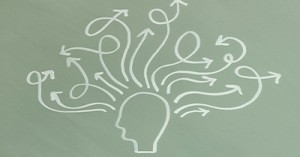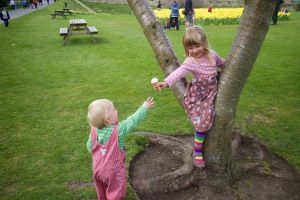Attention Deficit Hyperactivity Disorder (ADHD) is a neurodevelopmental condition that affects a child’s ability to regulate attention, impulses, and activity levels. In early childhood settings, ADHD may present as difficulty sitting still, following instructions, transitioning between tasks, or managing emotions. With the following key strategies, educators can create environments that support learning, emotional regulation, and social development.
Key Strategies for Early Childhood Educators
1. Clear and Supportive Communication
- Use brief, direct instructions with visual cues
- Say the child’s name before giving directions
- Ask the child to repeat instructions to confirm understanding
- Use visual schedules and daily flowcharts to reduce anxiety around transitions
2. Structured and Predictable Environments
- Keep routines consistent and give advance warnings before changes
- Display classroom rules and daily plans visually
- Minimize clutter and distractions in workspaces
- Seat children near calm peers or in low-stimulation zones
3. Movement and Sensory Breaks
- Build in short, frequent breaks (e.g., 5 minutes every 30 minutes)
- Alternate seated tasks with physical activities or errands
- Provide non-disruptive fidget tools at desks
- Offer low-pressure, calming activities when children feel overwhelmed
4. Hands-On and Individualized Learning
- Use multi-sensory materials and active learning strategies
- Schedule key learning during the child’s best concentration times (often mornings)
- Provide checklists and limit choices to reduce cognitive load
- Offer one-on-one support or peer buddies when possible
5. Emotional Literacy and Self-Regulation
- Use visual prompts like “STOP, THINK, DO” to guide behaviour
- Teach calming strategies (e.g., breathing, movement, quiet zones)
- Acknowledge effort, not just outcomes
- Celebrate small successes to build self-esteem
6. Collaborative Partnerships with Families
- Use daily communication books to share progress and concerns
- Be sensitive and respectful when discussing challenges
- Reinforce positive behaviours both at home and in the centre
- Align strategies across settings for consistency
EYLF & NQS Alignment
These strategies support:
- EYLF Outcome 1: Children feel safe, secure, and supported
- EYLF Outcome 3: Children have a strong sense of wellbeing
- EYLF Outcome 4: Children are confident and involved learners
- NQS QA1: Educational program is responsive and inclusive
- NQS QA5: Relationships with children are respectful and supportive
Further Reading
ADHD In Children
Calm Down Techniques For Overresponsive Children
Supporting Children Deal With Stress
Using Calming Sounds to Support Rest Time in Early Childhood
Calm Down Box For Children
Encouraging Children to Express Emotions Appropriately
References:
NSW Department of Education
The Royal Children's Hospital
Department for Education | South Australia







 Working as a childcare professional can be a challenge especially when dealing with behavioural problems which may arise. The techniques we use when dealing with
Working as a childcare professional can be a challenge especially when dealing with behavioural problems which may arise. The techniques we use when dealing with There are different types of behaviour that children can display and sometimes it can be hard to manage, especially if a child is having behavioural
There are different types of behaviour that children can display and sometimes it can be hard to manage, especially if a child is having behavioural As a parent, your behavioural expectations of your child can be higher than what is actually developmentally appropriate for your child's age.
As a parent, your behavioural expectations of your child can be higher than what is actually developmentally appropriate for your child's age.
 As Educators, there will be many instances where you will need to write about a child's behaviour. For a behaviour management plan, assessments, half-yearly or
As Educators, there will be many instances where you will need to write about a child's behaviour. For a behaviour management plan, assessments, half-yearly or As Educators when communicating with Parents (through verbal or non-verbal communication), there will be times where we need to discuss issues or concerns that may
As Educators when communicating with Parents (through verbal or non-verbal communication), there will be times where we need to discuss issues or concerns that may Challenging Behaviour is when a child does something that hurts themselves and/or other people.
Challenging Behaviour is when a child does something that hurts themselves and/or other people.
 As part of your child's development it is normal for your child to have anxiety and fears. A baby commonly shows a fearful sign to
As part of your child's development it is normal for your child to have anxiety and fears. A baby commonly shows a fearful sign to It's always difficult to bring up behavioural issues with parents, it can be nerve wrecking to tell a parent that their child misbehaves but that
It's always difficult to bring up behavioural issues with parents, it can be nerve wrecking to tell a parent that their child misbehaves but that All children deal with anger on a daily basis. Thinking about it as a child, there is a lot to be angry about. Elder people
All children deal with anger on a daily basis. Thinking about it as a child, there is a lot to be angry about. Elder people It is important to understand that your child behaviour problems could not just be from attention seeking. There are many factors to take into consideration
It is important to understand that your child behaviour problems could not just be from attention seeking. There are many factors to take into consideration


